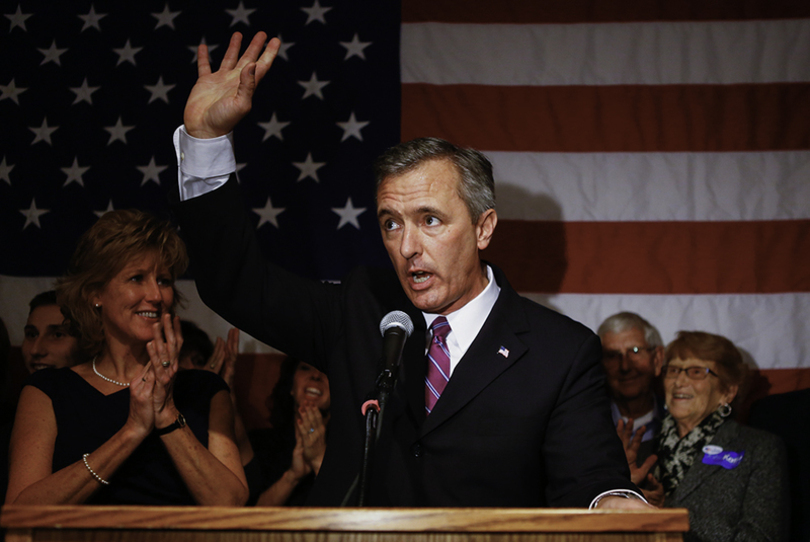Katko proposed terrorism bills pass in House of Representatives

Rep. John Katko (R-N.Y.) recently proposed two bills related to terrorism. They each passed through the House of Representatives and are awaiting a vote in the Senate. Luke Rafferty | Staff Photographer
Rep. John Katko (R-N.Y.) has passed a bill that will require the president of the United States to construct a coherent strategy to combat terrorist travel at the beginning of each new term.
This and another bill — both proposed by Katko — passed in the House of Representatives last month and have moved on to the Senate for approval.
Rep. John Katko (R-N.Y.) witnessed two of his proposed bills pass in the House of Representatives and move on to the Senate for approval last month.
The second bill would increase congressional oversight of the Transportation Security Administration, according to the text of the bill.
The first bill, called the National Strategy to Combat Terrorist Travel Act, focuses on trying to combat and track the travel patterns of known or potential terrorists, according to a release from Katko’s office in Washington, D.C.
Tracking is a matter of using standard intelligence patterns to follow suspected terrorists in their travels, said William Banks, director of the Institute for National Security and Counterterrorism (INSCT) at Syracuse University and the interim dean of SU’s College of Law.
“We track to make sure that these individuals are not attempting to enter the United States,” Banks said.
The bill says that any president needs to have an “implementation plan” to ensure that travel security gaps are closed, according to its text.
Robert Murrett, deputy director of INSCT, said it is “a good thing” for any president to have a strong sense of policy and of the strategy that they plan to use.
But the long-term effectiveness of an established presidential strategy is debated.
The length of time required to draft such a policy, combined with the tangled complexities of the war on terror, may render an official White House plan ineffective in the long-term, said Isaac Kfir, a visiting assistant professor of international relations and law at SU.
“Trying to figure out a coherent policy is dreadfully challenging,” Kfir said. “We’re talking about an advanced group of people, a complex form of political violence … which has tentacles in so many different countries.”
Kfir described the U.S. government’s approach to terror as more reactive than proactive because he said there is no clear way to stop radicalized ideas from spreading in the long-term.
“Whether we take out the leaders or not doesn’t mean adherence to or support for these philosophies is going to change,” Kfir said. “One aspect of the policy has to address … the ideologies.”
The second bill, called the Transportation Security Administration Reform and Improvement Act, focuses on tightening security at commercial airports, according to the bill’s text.
In particular, the bill would aim to make TSA more efficient by increasing congressional oversight of its security initiatives, hiring practices and screening technologies, according to the bill.
The priority of this bill, Murrett said, is to make civilian air travel as safe as possible for its passengers, both domestically and internationally.
Under the bill, the Department of Homeland Security, which encompasses TSA, would be required to regularly update Congress on its activities, according to the bill.
“It’s transparency, but it’s also accountability,” Banks said. “We want our executive agencies to be carrying out their … activities along the lines of congressional requirements.”
The bills are noteworthy for their bipartisan nature, garnering support from both Democrats and Republicans in the House, Murrett said.
Both of the bills, Banks said, act as “good government” bills by enhancing the degree to which different branches of the U.S. government communicate about counterterrorist efforts.
“They’re a positive step forward,” Banks said. “They’re not groundbreaking … but they add some accountability mechanisms and opportunities for Congress and the executive branch … to work more closely together in these areas.”




